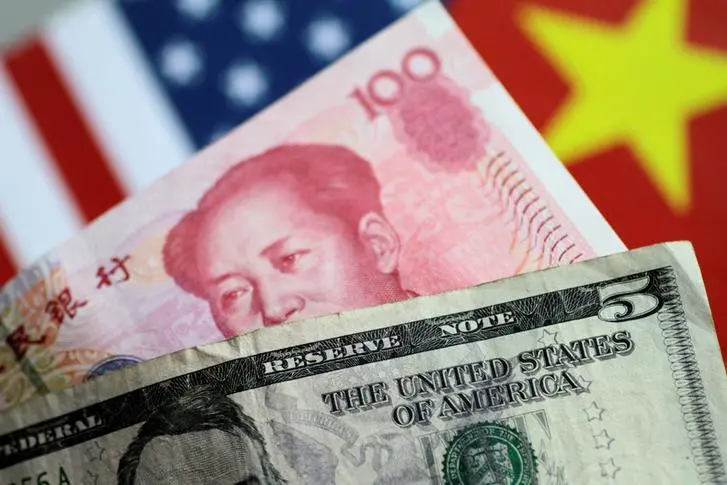PHOTO
FILE PHOTO: U.S. Dollar and China Yuan notes are seen in this picture illustration June 2, 2017. REUTERS/Thomas White/Illustration/File Photo
China's yuan on Thursday eased after hitting a more than one-week high against the dollar in the previous session, as corporate demand for the greenback offset a softer-than-expected U.S. inflation report.
The yuan's overnight strength was driven by data showing U.S. consumer prices flat month-to-month in May, against market forecasts of a 0.1% rise. But those gains were pared after Federal Reserve policymakers' median projection for the number of interest rate cuts this year fell to just one, from three in March.
Prior to the market's opening, the People's Bank of China (PBOC) set the midpoint rate, around which the yuan is allowed to trade in a 2% band, at 7.1122 per dollar, 11 pips firmer than the previous fix of 7.1133 per dollar.
But the central bank continued its months-long trend of setting the daily official yuan midpoint fixing at levels much stronger than market forecasts, a practice traders widely interpret as an effort by authorities to keep the yuan stable.
Wednesday's midpoint was 1,262 pips firmer than a Reuters' estimate of 7.2384 per dollar.
"Given no surprise from the Fed's policy meeting, the PBOC is likely to maintain the current midpoint fixing policy to guide the yuan weaker in an orderly manner," said Ken Cheung, chief Asian FX strategist at Mizuho Bank.
He said recent heavy corporate demand for dollars is likely to remain a drag on the yuan.
In the spot market, the onshore yuan opened at 7.2475 per dollar and quickly weakened past the psychologically important 7.25 level.
By midday, the yuan was changing hands at 7.2508, 128 pips softer than the previous late night close of 7.2380, which was the strongest level since June 4.
Its offshore counterpart traded at 7.2645 per dollar as of midday, compared with the previous close of 7.2640.
"The yuan is likely to continue rangebound trading for the time being," said Marco Sun, chief financial market analyst at MUFG Bank (China).
"There remains uncertainty around the U.S. inflation in summer due largely to impact from travels and consumption, and such uncertainty may keep the Fed on hold."
On the domestic data front, currency traders said markets were looking ahead to the May credit lending numbers to check out the pulse of the broader economy which remains under pressure due to a protracted property crisis. (Reporting by Shanghai Newsroom Editing by Shri Navaratnam)





















